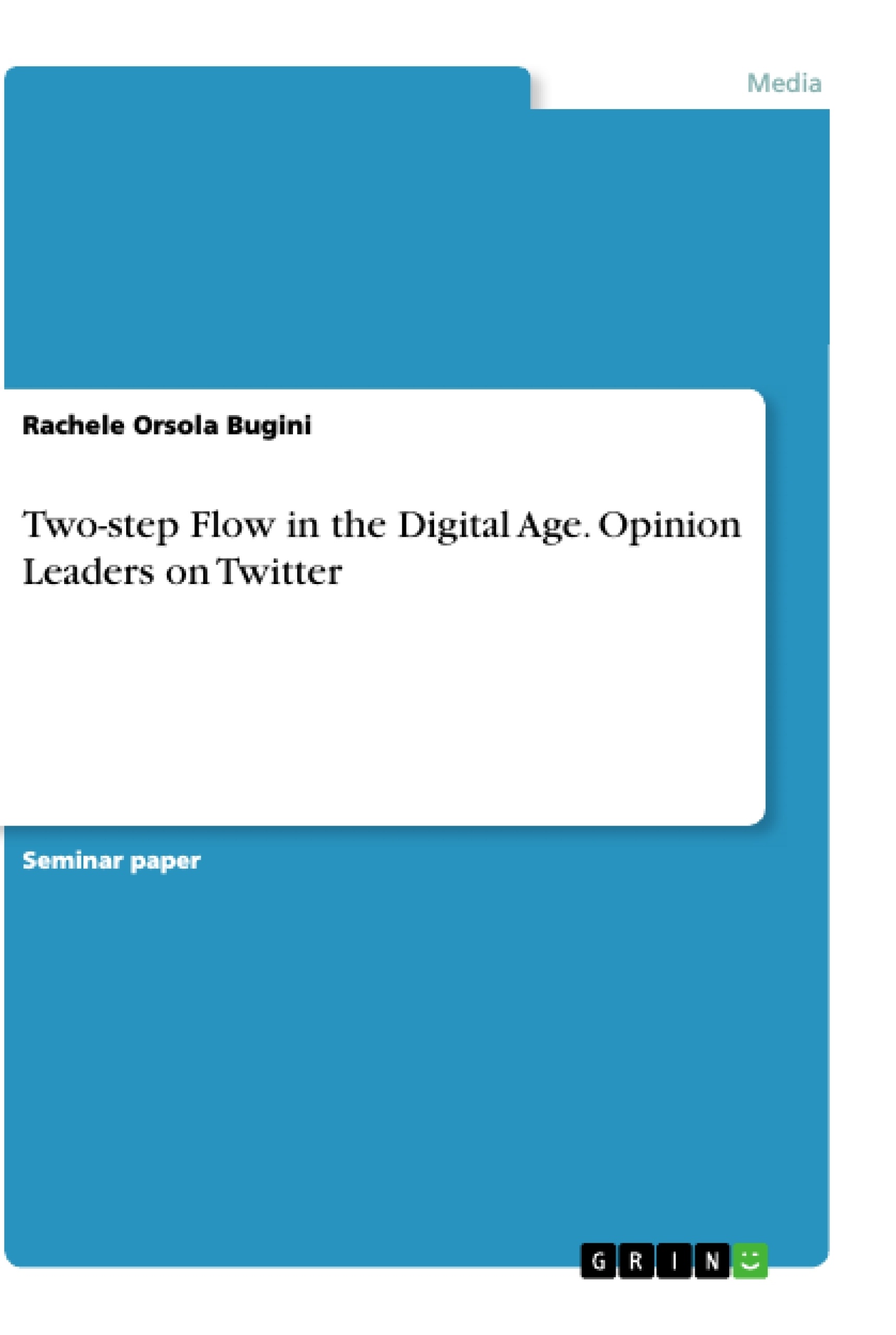This paper provides a theoretical background of Lazarsfeld's "Two-step Flow of Communication" and the debates around the validity of his theory in the digital era. It focuses on two Twitter studies conducted in the recent year, it presents and evaluates the results.
Since its formulation, the theory of the two-step flow of communication has been tested and validated, on numerous occasions through replicative studies, conducted on different topics. However, changes in technology in the past decade, especially the proliferation of web-based media such as blogs, online communities and social networks, have led to reassess the validity of the theory in relation to the new media environment.
Thanks to the Internet individuals can communicate instantly across geographic boundaries to one, few or many people. Social networking sites enable individuals to express opinions on any topic and instantly share them with others. The contemporary (social) media environment has renewed interest in the concept of two-step flow generally, and opinion leadership specifically. Several researches have been conducted to investigate if the model can still be explanatory of the flow of news and interactions occurring online on web platforms and social media.
The purpose of this work is to present the actual stand of the research and discuss the main findings of the studies led by the questions: is the two-step flow still relevant as a theorical framework? How does information flow from traditional media to their audience in the digital age? Are opinion leaders still playing a role in this process?
In the first chapters, a theoretical framework of the most discussed communication theories will be provided.
Table of Contents
- Introduction
- Two-Step Flow of Communication
- Multi-Step Flow
- One-Step Flow
- Opinion Leadership on Social Network Websites
- Who says what to whom on Twitter
- The two-step flow of communication in Twitter-based public forums
- Media Trust and Information Sharing
- Conclusion
Objectives and Key Themes
This work aims to investigate the relevance of the two-step flow of communication theory in the digital age, specifically examining the role of opinion leaders on Twitter. It explores how information flows from traditional media to their audience in the digital age and whether opinion leaders continue to play a significant role in this process.
- The evolution of mass communication theories in response to technological advancements
- The impact of social media platforms like Twitter on information dissemination and influence
- The role of opinion leaders in shaping public opinion and media consumption
- The relevance of the two-step flow theory in the context of contemporary social media landscapes
- The relationship between media trust and information sharing in the digital age
Chapter Summaries
- Introduction: This chapter introduces the concept of the two-step flow of communication and its historical development. It traces the evolution of mass communication theories from the hypodermic needle theory to the two-step flow model, highlighting the influence of technological advancements on these theories.
- Two-Step Flow of Communication: This chapter delves into the foundational work of Lazarsfeld, Berelson, and Gaudet, who proposed the two-step flow hypothesis. It explores their findings from the 1940 U.S. presidential election studies, emphasizing the role of personal contacts and opinion leaders in shaping voting behavior. The chapter further examines the contributions of Katz and Lazarsfeld, who expanded on the two-step flow theory through their book "Personal Influence," demonstrating the influence of opinion leaders in media consumption and persuasion.
Keywords
The primary keywords and focus topics of this work include: two-step flow of communication, opinion leadership, Twitter, social media, information sharing, media trust, digital age, mass communication, traditional media, public opinion, influence, and media effects.
- Citation du texte
- Rachele Orsola Bugini (Auteur), 2018, Two-step Flow in the Digital Age. Opinion Leaders on Twitter, Munich, GRIN Verlag, https://www.grin.com/document/452119




